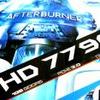AMD Islands and Specs
Heck yeah... more islands
The Islands
As tends to be the trend with AMD graphics cards, we are going to talk about a couple of islands first. You all know about the several codenames and that can be a little confusing. AMD codenamed their 6000 and 7000 product series' after islands in the Northern (6000) and Southern (7000) hemisphere.
It goes a little something like this, in the market we have entry level, mainstream and high-end products. Where you'd notice "Verde" (7700) that is entry level. "Pitcairn" is the codename the mainstream products (7800) hide under, and finally "Tahiti" is the codename for the most high-end products.
AMD Southern Islands
- Entry level = Verde = Radeon HD 7700 series
- Mainstream level = Pitcairn = Radeon HD 7800 series
- High-end level = Tahiti = Radeon HD 7900 series
The entire segment from top to bottom was released in 2012. However with today's release we can show you a somewhat unconfirmed product line of AMD's future lineup.
AMD Sea Islands (Desktop)
- Oland (Low Cost-Chip GCN-Basis, 384 Shader-units and TMUs - 16 ROPs - 128 Bit DDR Interface)
- Bonaire (Mainstream-Chip - GCN-Basis comparable to Cape-Verde Chips - Radeon HD 7700 Series)
- Hainan (Possible Performance-Chip - GCN-Basis - comparable Radeon HD 7800 Series)
- Curacao (Possible High End-Chip - GCN-Basis - R1000/Tahiti-Chips comparable Radeon HD 7900 Series)
- Aruba (Possible Dual-Chip - GCN-Basis comparable Radeon HD 7990)
So with Bonaire as reviewed today we arrive at a slightly revised GCN architecture based radeon HD 7790. But yeah, it's getting a little confusing with 8000 series products being launched which are 7000 series products and so on.
Radeon HD 7790
Okay, now the good stuff. We'll focus on the 7790 today of course, but it is important to understand that there are significant changes in this family of GPUs. The GPU architecture was revised a bit, AMD moved to a 28nm process technology last year, the cards are PCIe gen 3 compatible and there have been significant changes on power consumption. We'll address all the features separately of course. With the launch of the Radeon HD 7000 series Eyefinity was updated to version 2.0. DDM audio is fully supported (you hear audio on the actual monitor it's played on), a 5x1 landscape mode was introduced, and you may create custom multi-monitor resolutions. But let's break things down.
So AMD bakes GPUs on the all new 28nm node, in very simple wording that means they can put more transistors on a smaller area. For the Bonaire chip you'd be looking at a 160 mm2 die size.
Radeon HD series 7700
We start off with the GPU overview (architecture we'll discuss later). The Bonaire core has a good 2.08 Billion transistors, the internal architecture has changed slightly, we'll talk a little deeper about that in a minute. But as a result:
- The Radeon HD 7750 is packed with 512 shader processors harbored in Compute Unit segments (8 of them)
- The Radeon HD 7770 is packed with 640 shader processors harbored in Compute Unit segments (10 of them)
- The Radeon HD 7790 is packed with 896 shader processors harbored in Compute Unit segments (14 of them)
Memory wise cards will pack 1 Gigabyte of gDDR5 memory, we expect 2GB SKUs as well BTW. The memory bus on Bonaire remains 128-bit, but combined with the gDDR5 memory (which is quad data rate) you do get a decent chunk of much needed memory bandwidth, which the GPU certainly can use.
The memory clock for Bonaire has been increased bigtime, products will be clocked at 6.0 GBPs and higher depending on the SKU and thus board partner. So expect the Memory clock frequency to be 1500 MHz, being quad data-rate (gDDR5) that results in an effective data rate of 6000 MHz or 6 Gbps. At 6 Gbps this will give the Bonaire GPUs 96 GB/sec of framebuffer bandwidth to do their thing in. The Bonaire GPU packs 2.08 Billion transistors, but if you can't apply a fast enough clock frequency it would become a problem. Well, that's not an issue for AMD either, the reference R7790 is clocked at 1000 MHz. So again, these are GHz editions. The GPU is 'Boost' capable, meaning it will try to clock in at 1 GHz all the time, yet if the power signature is too heavy, it can clock down a little.
And yes, expect the board partners to deliver faster clocked SKUs much like we'll be showing today with the MSI card.


